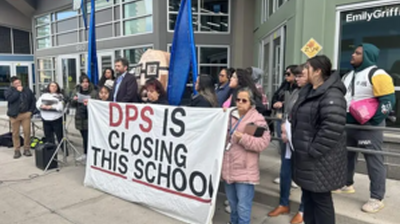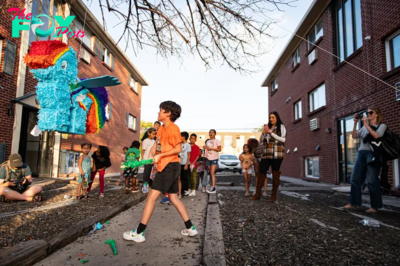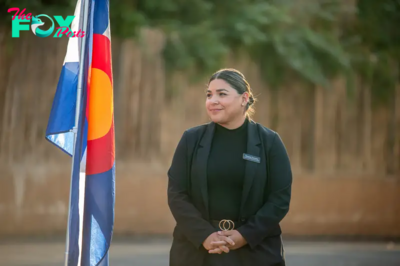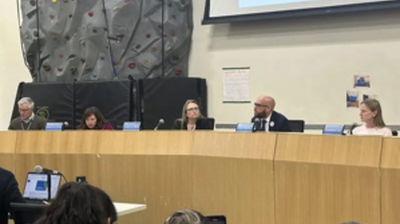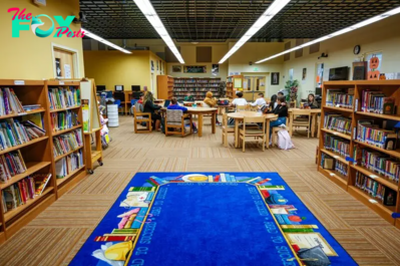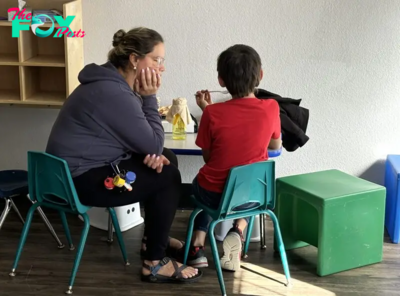Education
As most high schoolers head home for the day, these Colorado Springs students are just starting class
COLORADO SPRINGS — By 4 p.m. most weekdays, a stillness has settled over much of Sierra High School, the constant slamming of lockers and feverish exchanges of hallway gossip reduced to the quiet footsteps of teachers.
But for a small group of high schoolers, the school day is just beginning as dusk sets in.
Among them is Jessie Anderson, a 20-year-old “super, super, super senior” who turned to night school after struggling to stay on pace in classes because of challenges both inside and outside school.
“I didn’t want to give up on my dream so easily because obviously I didn’t graduate on time,” she said.
Anderson and her classmates are on opposite schedules from everyone else at school, but their goal is generally the same: earning their moment on the graduation stage. The students are enrolled in an alternative school that caters to students whose life circumstances often interfere with their ability to thrive in school. During the 2022-23 school year, 93 alternative schools in Colorado attached to public schools or charter school authorizers — mostly high schools — educated more than 28,000 students, according to data from the Colorado Department of Education.
“Across the board, our alternative (education) campuses are typically focused on kids who have many different needs but are often behind in school and are needing a space that can be safe and engaging and connect them and help them still be successful academically,” said Johann Liljengren, director of dropout prevention and student re-engagement at the state education department.
Some schools specialize in working with pregnant students or students who are in recovery from substance abuse. Other schools, like the Career Readiness Academy housed at Sierra High School as part of Harrison School District 2, cater to students whose lives don’t fit neatly inside a regular school day schedule.
The district, which serves 13,367 students in preschool through high school, abandoned its old model of trying to squeeze all kids into “one square box” that worked best for teachers and administrators, Superintendent Wendy Birhanzel said.

Educators and administrators realized they needed to “instead reverse that and adjust our instruction and our opportunities around what the students need,” Birhanzel said. “And now students feel like they belong and there’s a system that’s responsive to their needs and understands that not everyone has to stick to a traditional high school model.”
The high-poverty district — 73% of students qualify for free and reduced-price lunch, a federal measure of low-income households — has offered night school for high schoolers for two years as a way to keep nudging students who are chronically behind and on the cusp of dropping out toward graduation. Many days, educators celebrate students simply showing up. Most of the students’ lives are pulled in all sorts of directions as they navigate stressors burdensome beyond their years. Some teens must work during the day to help support their families. Others have stepped into the role of caregiver for parents or other relatives.
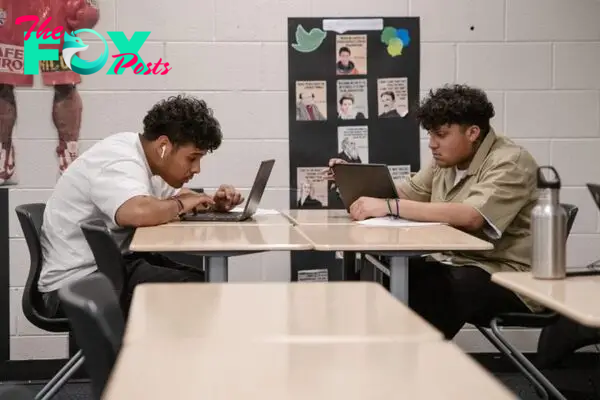
That means that teachers and school leaders must delicately balance the task of holding students accountable for their schoolwork with the real-life challenges that might prevent them from attending class every day.
Night classes at Career Readiness Academy Day and Night School run from 4 p.m. to 7 p.m. Mondays through Thursdays, with students trickling in and out as they juggle job and family priorities. Thirty-five students are enrolled in night classes this school year, but the number who make it to class fluctuates between 15 and 20 on a given night, said Kate McKinnon, one of two teachers who oversee night classes.
Students take charge of their education, deciding what classes and how many to plow through at one time through an online platform as they set out to fulfill all 23 credits they need to graduate.
“It’s kind of a last stop,” said Terry Dunn, principal of Career Readiness Academy. “The first thing we ask them is, why are you in the situation you’re in? The second thing is, how badly do you want to graduate? Thirdly is, how hard are you willing to work? And we also make it very known that you can’t continue the same academic behavior that you have right now.”
The students usually own their mistakes, Dunn said.
“Most students, they don’t want to hear that they’re failing,” he said. “They already know that. So we take the approach of how we can be successful.”
“Be actively involved in your own rescue”
Educators and staff who keep the night school program running are careful about the ways they speak to students, particularly when they haven’t seen them in a couple days.
Staff say, “(we’re) so glad to see you. We’re glad you’re here. Let’s get busy. Let’s get started again,’” said counselor Melva Hall, who doubles as the “greeter” for students.
“Boy, do we give chances,” she added.
-

 Education2d ago
Education2d agoWhat would it mean if President-elect Trump dismantled the US Department of Education?
-

 Education5d ago
Education5d agoPhiladelphia students have a new reading and writing curriculum − a literacy expert explains what’s changing
-

 Education5d ago
Education5d agoWhy school police officers may not be the most effective way to prevent violence
-

 Education1w ago
Education1w agoCampus diversity is becoming difficult to measure as students keep their race and ethnicity hidden on college applications
-

 Education1w ago
Education1w agoFederal judge rules that Louisiana shalt not require public schools to post the Ten Commandments
-
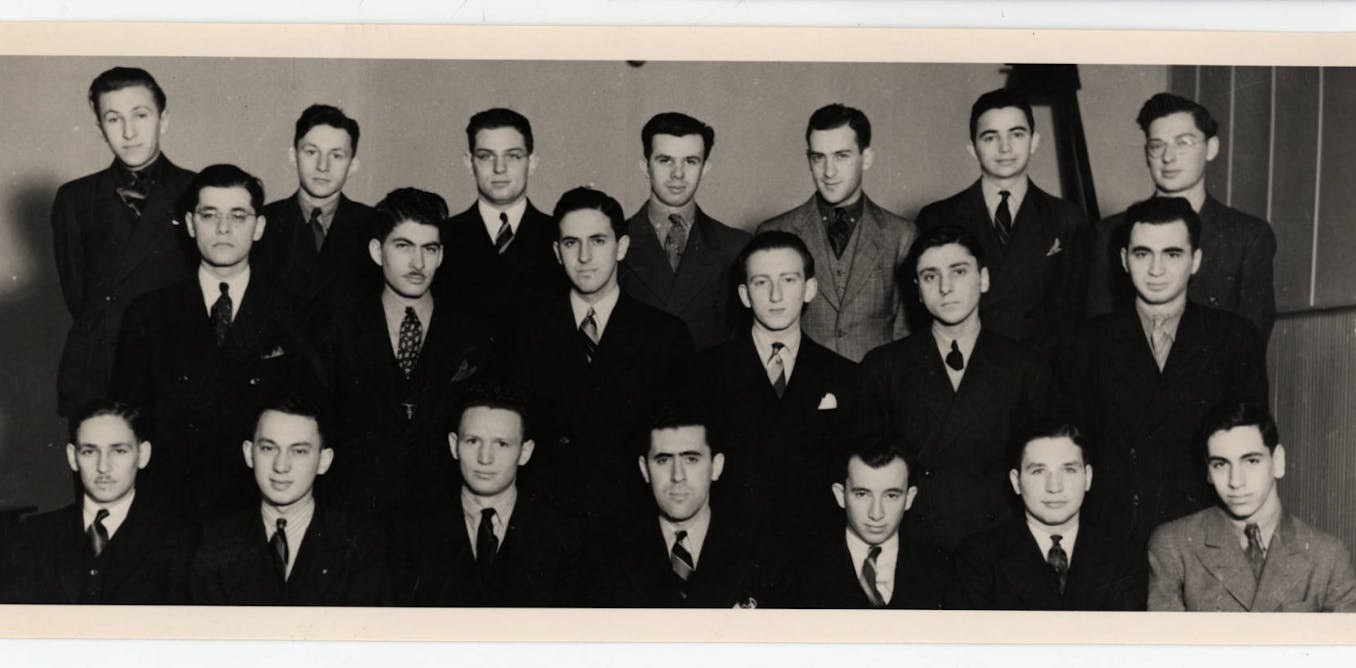
 Education1w ago
Education1w agoCampuses are ground zero in debates about antisemitism − but that’s been true for 100 years
-

 Education1w ago
Education1w agoSocioeconomic status explains most of the racial and ethnic achievement gaps in elementary school
-

 Education1w ago
Education1w agoMothers, metaphors and dyslexia: What language reveals about the challenges of a child’s learning disability
